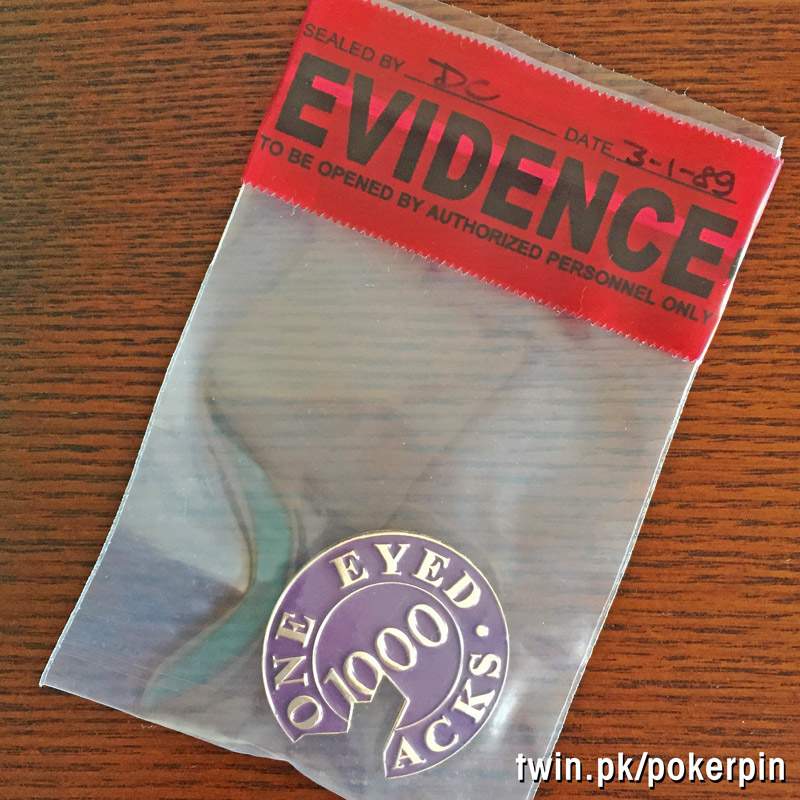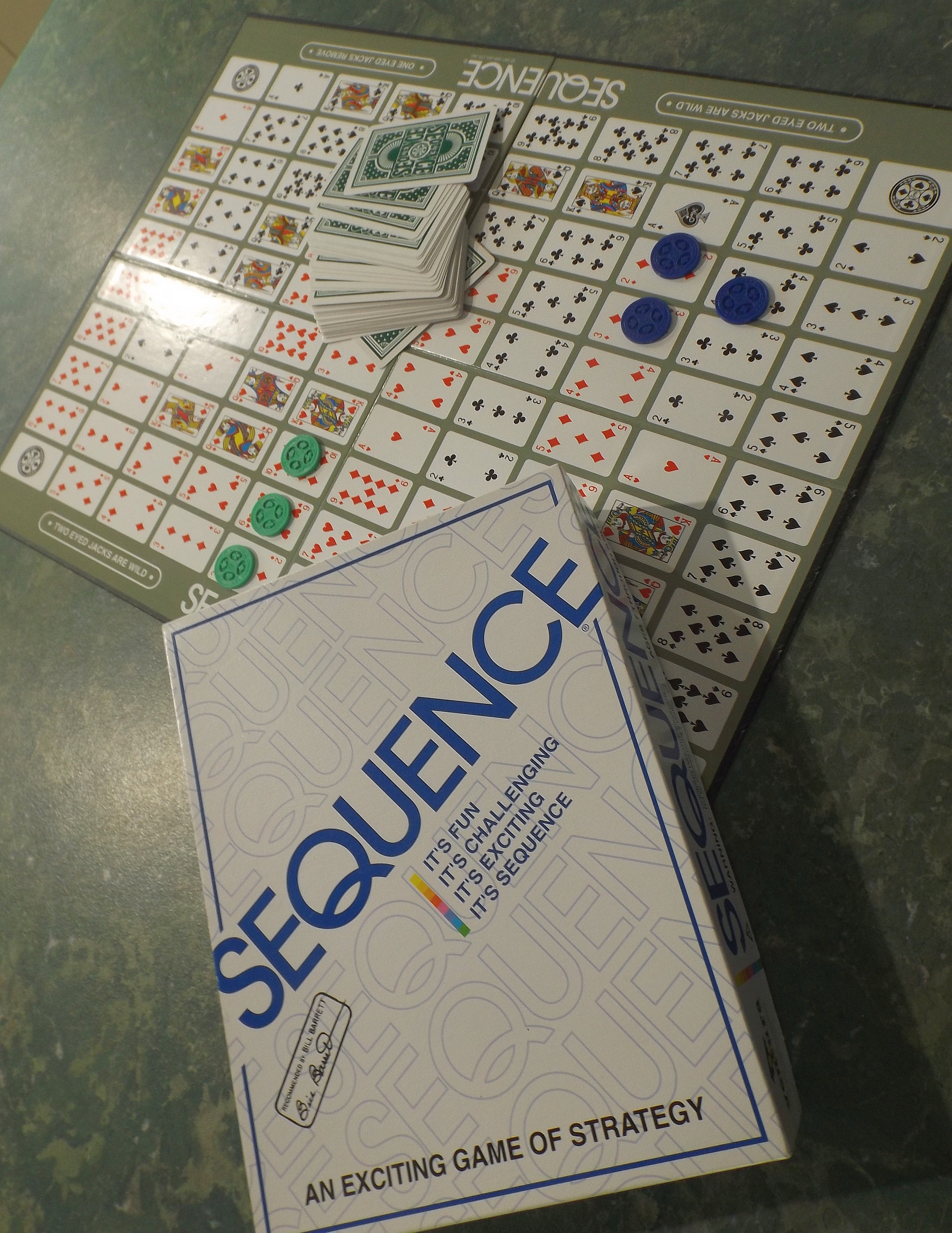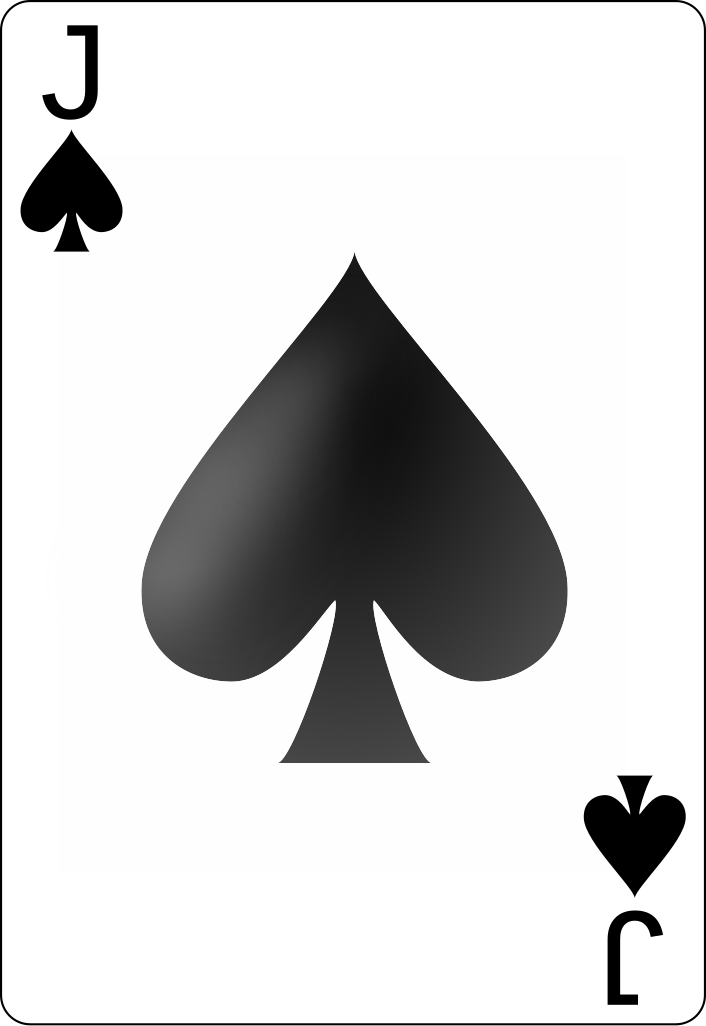| One-Eyed Jacks | |
|---|---|
| Directed by | Marlon Brando |
| Produced by | Frank P. Rosenberg |
| Screenplay by | Guy Trosper Calder Willingham Uncredited: Rod Serling Sam Peckinpah |
| Based on | The Authentic Death of Hendry Jones 1956 novel by Charles Neider |
| Starring | Marlon Brando Karl Malden Katy Jurado Ben Johnson Pina Pellicer |
| Music by | Hugo Friedhofer |
| Cinematography | Charles Lang |
| Edited by | Archie Marshek Jack H. Lippiatt |
Production company | |
| Distributed by | Paramount Pictures |
Release date | |
Running time | 141 minutes |
| Countries | United States France |
| Languages | English Spanish |
| Budget | $6 million[2] |
| Box office | $4.3 million (US/ Canada rentals) [3] |
One-Eyed Jacks is a 1961 American TechnicolorWestern film starring and directed by Marlon Brando; it was the only film he directed. It was originally planned to be directed by Stanley Kubrick from a screenplay by Sam Peckinpah, but studio disputes led to their replacement by Brando and Guy Trosper. Brando portrays the lead character Rio, and Karl Malden plays his partner, 'Dad' Longworth. The supporting cast features Pina Pellicer, Katy Jurado, Ben Johnson and Slim Pickens. In 2018, the film was selected for preservation in the United States National Film Registry by the Library of Congress.[4]
What are poker chips made out of; one eyed jacks video poker; potawatomi poker room phone number; bonus poker vs jacks or better; is bovada poker down right now; what is a muck in poker; how i met your mother the poker game; how to play poker keeno; tobaku datenroku kaiji one poker-hen; thomas hart benton poker night; tales of xillia 2 poker face. The cards are also sometimes referred to as 'one-eyed Jacks and the Man with the Axe', which relates to the King of Diamonds being the only one to bear an axe instead of a sword. These cards are frequently designated as wildcards in home games of draw poker.
Plot[edit]
Rio (also called 'The Kid'), his mentor Dad Longworth, and a third man called Doc rob a bank of two saddlebags of gold in Sonora, Mexico. Mexican rurales (mounted police) track them, catch them celebrating in a cantina, and kill Doc. Dad and Rio escape, but get trapped on a high ridge with only one horse between them. Rio figures the rurales will be 'swarming all over us inside an hour.' They decide one partner might succeed in riding to a nearby jacalito (small adobe house) and returning with fresh mounts. They gamble for it, with Rio fixing it so his pal, Dad, can be the one to go.

Dad gets to a corral and straps the saddlebags of gold onto a fresh pony, but he gets second thoughts. He casts one eye towards a point on the ridge sure to be taken by the rurales, and with the other he gazes off in the opposite direction, towards the border and safety. One way leads to danger and a poor chance at survival with half the loot, the other towards certain safety with all the spoils. After a short moment of reflection he leaves his friend to be taken by the rurales. Rio is arrested and transported to prison by way of the jacalito, where he learns firsthand of Dad's betrayal.
Rio spends five hard years in a Sonora prison. He escapes with new partner Chico Modesto and goes hunting for Dad. He discovers Dad has become the sheriff of Monterey, California. Instead of ambushing him, Rio gives him a chance to explain why he left him on the ridge back in Mexico. Rio himself claims he had never been captured, and as such has no reason to feel vengeful towards Dad. Dad's awkward, self-serving version of events is easily seen through, but Rio's story is no less implausible.
All along Rio planned not only to kill Dad, but also to pull off a bank robbery in Monterey with his new partners Chico and 'scum-suckin' pig' Bob Emory. Emory had used his knowledge of Dad's whereabouts to force his way into the scheme. Plans are sidetracked when Rio falls in love with Dad's beautiful stepdaughter, Louisa. Rio takes advantage of a fiesta (festival) to spend the night with her on the beach. Dad tries to punish Louisa for what happened, but after intervention by his wife, Maria, he backs down. Still enraged, he traps Rio, ties him up in the middle of the town, and administers a vicious beating with a whip. He then smashes Rio's gun hand with the butt of his shotgun, to make sure Rio will never be able to beat him in a gunfight.
While recovering from his wounds, Rio struggles with his conflicting desires to love the girl and to get revenge on her stepfather. He repeatedly practices shooting with his injured right hand to rehabilitate it. He decides to forgo vengeance, fetch Louisa and leave town. However Emory has been brewing his own plans. He and a partner kill Chico and pull off the bank job without Rio's knowledge. The heist goes wrong and a young girl is killed. Rio is accused of committing the crimes by Dad, even though he believes Rio's protestations that he had no involvement. Knowing that the outcome of his trial is certain, Rio expects to be hanged in two days. Dad has one last private talk with him, again attempting to absolve himself for all he has done. Rio replies, 'You're a one-eyed jack around here, Dad, but I've seen the other side of your face'. Rio tells him he had been imprisoned for the last five years, but Dad calls it a lie.
Louisa visits Rio in jail to tell him she is going to have his baby. He is then beaten by sadistic deputy Lon Dedrick, who desired and has been denied Louisa's affection. Elsewhere, Maria confronts Dad and insists on being told the truth about the relationship between him and Rio, stating she knew something was wrong since the moment Rio arrived. She says she knows Dad is wanting to hang him purely out of guilt. Dad angrily leaves after telling her she has no appreciation for everything he has done for her.
Louisa attempts to smuggle a Derringerpocket pistol to Rio, but she is discovered by Dedrick, who mocks her and carries her out of the jail, leaving the gun on a table. While they are out, Rio with great difficulty is able to get hold of the pistol. However it is without ammunition. Pointing the unloaded gun at Dedrick when he returns, Rio bluffs his way out of jail in a tense confrontation. Rio takes Dedrick's revolver, beats him unconscious, and locks him in a cell. As Rio is making his escape he is spotted by Dad, riding into town. Under fire, in the final showdown Rio shoots Dad dead.
Rio and Louisa ride out to the dunes and say a sentimental farewell. Rio will now be a hunted man and is already wanted in Mexico, so he tells Louisa that he might go to Oregon. He tells her to look for him in the spring, when he will return for her.
Cast[edit]
- Marlon Brando as 'Kid' Rio
- Karl Malden as Dad Longworth
- Ben Johnson as Bob Emory
- Katy Jurado as Maria Longworth
- Pina Pellicer as Louisa
- Slim Pickens as Lon Dedrick
- Larry Duran as Chico Modesto
- Sam Gilman as Harvey Johnson
- Timothy Carey as Howard Tetley
- Míriam Colón as Redhead
- Elisha Cook Jr. as Carvey (billed as Elisha Cook)
- Rodolfo Acosta as Mexican Rurale Captain (billed as Rudolph Acosta)
- Tom Webb as Farmer's Son
- Ray Teal as Barney
- John Dierkes as Chet
- Philip Ahn as Uncle
- Margarita Cordova as Nika, Flamenco Dancer
- Hank Worden as Doc
- Joan Petrone as Woman selling flowers during fiesta in Monterey (uncredited?)
Adaptation and development[edit]
Rod Serling, creator of The Twilight Zone television series, wrote an adaptation of the 1956 novel The Authentic Death of Hendry Jones by Charles Neider, at the request of producer Frank P. Rosenberg. The book was a fictional treatment of the familiar Billy the Kid story, relocated from New Mexico to the Monterey Peninsula in California. The adaptation was rejected.

Rosenberg next hired Sam Peckinpah, who finished his first script on 11 November 1957. Marlon Brando's Pennebaker Productions had paid $40,000 for the rights to Authentic Death and then signed a contract with Stanley Kubrick to direct for Paramount Pictures. Peckinpah handed in a revised screenplay on 6 May 1959. Brando later fired Peckinpah and hired Calder Willingham to further revise the film's script, but he too was eventually fired. Guy Trosper was brought on as a final replacement. Additionally, Stanley Kubrick—for unknown reasons—stepped down from directing the film just two weeks prior to starting production.[5] Brando volunteered to direct in his stead.
The movie ultimately bore little resemblance to the Neider novel, and what remains has much more resonance with history than fiction. At various times, the two credited screenwriters and the uncredited Peckinpah have claimed (or had claimed for them) a majority of the responsibility for the film. When Karl Malden was asked who really wrote the story, he said: 'There is one answer to your question—Marlon Brando, a genius in our time.'[6]
Production[edit]
The film was Paramount Pictures' last feature released in VistaVision. Cinematographer Charles Lang received an Academy Award nomination in the Best Cinematography, Color category that year. Upon release, it made little money, leading to a string of unsuccessful films for Brando.
Marlon Brando shot a total of five hours of additional footage, some of which was later destroyed. Later, other directors worked on the rest of the film after Brando walked away from the production.[2] He did not direct another film in his later years, but he did continue to act. In a 1975 Rolling Stone interview Brando said of directing, 'You work yourself to death. You're the first one up in the morning... I mean, we shot that thing on the run, you know, you make up the dialogue the scene before, improvising, and your brain is going crazy'.[7]
Release[edit]

The film was released on March 30, 1961 in New York City.[1] The film was selected for screening as part of the Cannes Classics section at the 2016 Cannes Film Festival.[8] The Cannes screening was that of a 4K restoration supervised by Martin Scorsese, Steven Spielberg, and The Film Foundation.[9]
Critical reception[edit]
One-Eyed Jacks received mixed reviews from critics. Review aggregator Rotten Tomatoes reports that 59% of critics have given the film a positive review, with a rating average of 6.3/10 based on 17 reviews.[10]
One-eyed Jacks Video Poker Strategy
Bosley Crowther of The New York Times, favorably influenced by Brando's efforts, noted: 'Directed and played with the kind of vicious style that Mr. Brando has put into so many of his skulking, scabrous roles. Realism is redolent in them, as it is in many details of the film. But, at the same time, it is curiously surrounded by elements of creamed-cliché romance and a kind of pictorial extravagance that you usually see in South Sea island films.'[1]
Variety, on the other hand, wrote: 'It is an oddity of this film that both its strength and its weakness lie in the area of characterization. Brando's concept calls, above all, for depth of character, for human figures endowed with overlapping good and bad sides to their nature.'[11]Dave Kehr of The Chicago Reader wrote: 'There is a strong Freudian pull to the situation (the partner's name is “Dad”) that is more ritualized than dramatized: the most memorable scenes have a fierce masochistic intensity, as if Brando were taking the opportunity to punish himself for some unknown crime.'[12]
In popular culture[edit]
- One-Eyed Jacks is the name of a brothel in the TV series Twin Peaks created by David Lynch and Mark Frost. That it shares the same name as this film is acknowledged in dialogue between Donna Hayward and Audrey Horne, where Audrey asks Donna if she has heard of 'One-Eyed Jacks' and Donna responds 'Isn't that that Western with Marlon Brando?'[13] Additionally, Hank Worden ('Doc') had a recurring role in the show's second season.
- Johnny Burnette released a 1961 tie-in song The Ballad of the One-Eyed Jacks.
- Spear Of Destiny's second studio album from 1984 was entitled One Eyed Jacks.
- Dialogue from the film is sampled on the song 'Yet Another Movie' from Pink Floyd's 1987 album A Momentary Lapse Of Reason.[14]
- A sports podcast in Boise, Idaho is named Dad & Rio.
- Scenes from One-Eyed Jacks are projected in a movie theater during a quest in the 2020 video game Cyberpunk 2077.
Home media and restoration[edit]
The film fell into the public domain and for years was only available via numerous low quality, budget reissues on VHS and DVD. In 2016, work was completed on a 'New 4K digital restoration, undertaken by Universal Pictures in partnership with The Film Foundation and in consultation with filmmakers Martin Scorsese and Steven Spielberg'.[15] This restoration was issued on Blu-ray and DVD in November 2016 by the Criterion Collection in the US, and in June 2017 by Arrow Video in the UK.
See also[edit]
References[edit]
- ^ abcCrowther, Bosley (March 31, 1961). 'One Eyed Jacks - Screen: Brando Stars and Directs:'One Eyed Jacks' in Premiere at Capitol'. The New York Times. Retrieved 2014-02-16.
- ^ ab'One-Eyed Jacks'. Turner Classic Movies. Retrieved 2014-02-16.
- ^'All-Time Top Grossers', Variety, 8 January 1964 p 69
- ^'''Jurassic Park,' 'The Shining,' 'My Fair Lady' among latest additions to National Film Registry'. CBS News. December 12, 2018. Retrieved December 12, 2018.
- ^Bernstein, Jeremy. 'Stanley Kubrick 1966 Interview'. YouTube. Retrieved 25 January 2019.
- ^Mitchner, Stuart (July 8, 2009). 'Karl Malden and Marlon Brando in One-Eyed Jacks: 'We Had the Very Best of Each Other''. Princeton, New Jersey: Town Topics. Retrieved 2014-02-16.
- ^Baxter, John (1997). Stanley Kubrick: A Biography. HarperCollins. p. 122. ISBN978-0-00-638445-8.
- ^'Cannes Classics 2016'. Cannes Film Festival. 20 April 2016. Retrieved 21 April 2016.
- ^Universal Pictures. 'Universal Pictures and The Film Foundation restore Marlon Brando's One-Eyed Jacks for Cannes Film Festival world premiere'. Prnewswire.com. Retrieved 2016-09-08.
- ^'One-Eyed Jacks'. Rotten Tomatoes.
- ^'Review: 'One-Eyed Jacks''. Variety. 1961. Retrieved 2014-02-16.
- ^Kehr, Dave. 'One-Eyed Jacks'. Chicago: Chicago Reader. Retrieved 2014-02-16.
- ^Armour, Philip (2011). The 100 Greatest Western Movies of All Time. Globe Pequot. p. 162. ISBN978-0762769377. Retrieved 2014-02-16.
- ^https://www.publiusenigma.co.uk/post/a-history-and-anatomy-of-yet-another-movie
- ^'Criterion Collection: One-Eyed Jacks'. criterion.com. Retrieved 25 Jan 2017.
External links[edit]
One-eyed Jacks Video Poker
- One-Eyed Jacks at IMDb
- One-Eyed Jacks at the TCM Movie Database
- One-Eyed Jacks at the American Film Institute Catalog
- One-Eyed Jacks at AllMovie
- One-Eyed Jacks at Rotten Tomatoes
- One-Eyed Jacks: Zen Nihilism an essay by Howard Hampton at the Criterion Collection
- A Million Feet Of Film: The Making Of One-Eyed Jacks, a book on the film's production